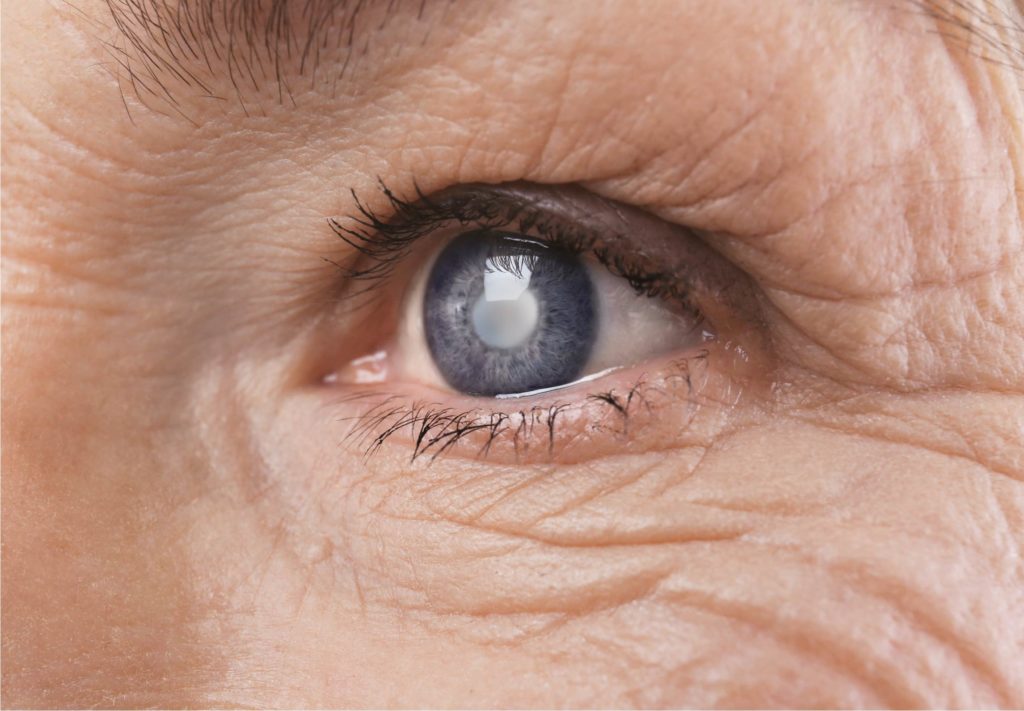June is Cataract Awareness Month. A cataract is a dense clouding in the lens of an eye due to protein build up. They usually develop slowly and are more common in older adults. Currently, almost 2.5 million Canadians have cataracts.
Symptoms
Cataracts usually develop slowly so you may not notice any vision problems initially, however, as protein build up starts to clump together, you are more likely to notice these issues. The most common symptoms of cataract are the following:
- Blurry vision
- Double vision
- Faded colors
- Difficulty seeing clearly at night
- Seeing a halo around lights
- Sensitivity to light and glare
- Frequent changes in eyeglass prescription
Risk Factors
Are some people more prone to developing cataracts? The answer is YES. Here are some risk factors that can lead to the development of cataracts:

- Diabetes: Untreated high blood sugar can cause many health problems. Over a long period of time, older adults with poor glycemic control may have high blood sugar that can lead to damaged blood vessels including those in the eye. This can result in development of cataracts.
- Smoking: Smokers are two to three times more likely to develop cataracts.
- Alcohol: Heavy drinkers are also more likely to develop cataracts
- Obesity: people who are overweight might have poor nutrition and high blood sugar levels, both of which risk factors for cataracts.
- Family history: Cataracts may run in your family. You have a higher risk of developing one if you have a family history.
- High blood pressure: Hypertensive patients are at an increased risk. Certain medication to control blood pressure may also be a cause of cataract development.
- Overexposure to sun: Frequent exposure to sun can be harmful to your health including your eyes. UV light can increase the risk of cataracts.
How are cataracts diagnosed?

Your eye doctor can diagnose whether you have a cataract through a comprehensive eye exam. Usually, the exam will include an eye chart test, eye pressure along with a retinal exam. At LMC Optometry, we offer comprehensive eye health exams. Click the button below to book your eye exam today!
Treatment and prevention
The most common treatment for cataracts is surgery but you may not need it right away. If you catch the problem at an early stage, you might be able to get away with a stronger prescription for your eyeglasses which can make your vision better for a while.
There are also ways in which you can prevent the development of cataracts:
- Exercising and eating healthy: If you are diabetic, it is a good idea to maintain a healthy lifestyle to keep your blood sugar levels in check. Eating healthy and exercising regularly can help you keep maintain blood glucose levels and therefore prevent cataract development.
- Try to maintain a healthy weight. This can help you avoid several health problems including diabetes which may increase your risk of cataracts.

- Stop smoking: Smoking can cause a lot of vision problems including cataracts. If you are a smoker, consider quitting.
- Wear sunglasses to protect yourself from harmful UV rays. At LMC Optometry, we offer a variety of sunglass brands and all include the highest ratings of UVA/UVB protection. Click the button below to explore more or visit our clinic today!
- Have regular eye exams. It is important to get regular eye exams for early detection of cataracts. At LMC Optometry, we offer comprehensive eye health exams and as well as diabetic eye exams. Click the buttons below to book an appointment with our optometrist today!
Cataracts are very common in older adults. If you are noticing symptoms, book an eye exam with an LMC optometrist today. Remember, early detection can help you avoid severe symptoms and improve your vision health.



